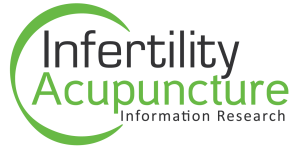When you think about fertility acupuncture benefits, you will think about better blood flow. In the last two decades, reproductive acupuncture became synonymous with better circulation in the uterine lining.
It all started in 1996. Dr. Elizabeth Stener published the first study on how this time-tested natural therapy improves blood flow to the uterus and therefore your fertility.
For fertility acupuncturists, this was groundbreaking! Acupuncturists knew for millennia they could help you to get pregnant faster. But after this study you don’t have to take our word for it, just rely on scientific data.
How acupuncture improves uterine blood flow
Dr. Stener and the colleagues recruited a group of women who had poor circulation to their uterus. They measured uterine blood flow before starting treatment. Women have received acupuncture twice a week for 4 weeks. Eight sessions in total. The blood flow was measured after the eighth electro-acupuncture (EA) treatment, and once again 10-14 days after the treatment was over. Additionally, they measured women’s body temperature at the place on their body where they had this natural treatment and additionally the forehead. They wanted to explore if acupuncture works through the place where needles were placed or through the central nervous system.
The results showed that electro-acupuncture can improve circulation to the uterus. And the important bit is you need at least eight sessions for the uterine artery to relax. This research gave us the proof that it takes time for acupuncture to make changes in your body. The changes are measurable. Of course, the main take away is that acupuncture improves uterine blood flow. Furthermore, it can achieve this by regulating your blood pressure through the nervous system.
Read the full paper below:
Reduction of blood flow impedance in the uterine arteries of infertile women with electro-acupuncture.
Stener-Victorin E1, Waldenström U, Andersson SA, Wikland M.
Hum Reprod. 1996 Jun;11(6):1314-7.
Abstract
In order to assess whether electro-acupuncture (EA) can reduce a high uterine artery blood flow impedance, 10 infertile but otherwise healthy women with a pulsatility index (PI) >=3.0 in the uterine arteries were treated with EA in a prospective, non-randomized study.
Before inclusion in the study and throughout the entire study period, the women were down-regulated with a gonadotrophin-releasing hormone analogue (GnRHa) in order to exclude any fluctuating endogenous hormone effects on the PI. The baseline PI was measured when the serum oestradiol was <=0.1 nmol/l, and thereafter the women were given EA eight times, twice a week for 4 weeks.
The PI was measured again closely after the eighth EA treatment, and once more 10-14 days after the EA period. Skin temperature on the forehead (STFH) and in the lumbrosacral area (STLS) was measured during the first, fifth and eighth EA treatments.
Results:
Compared to the mean baseline PI, the mean PI was significantly reduced both shortly after the eighth EA treatment (P < 0.0001) and 10-14 days after the EA period (P < 0.0001).
STFH increased significantly during the EA treatments. It is suggested that both of these effects are due to a central inhibition of the sympathetic activity.


